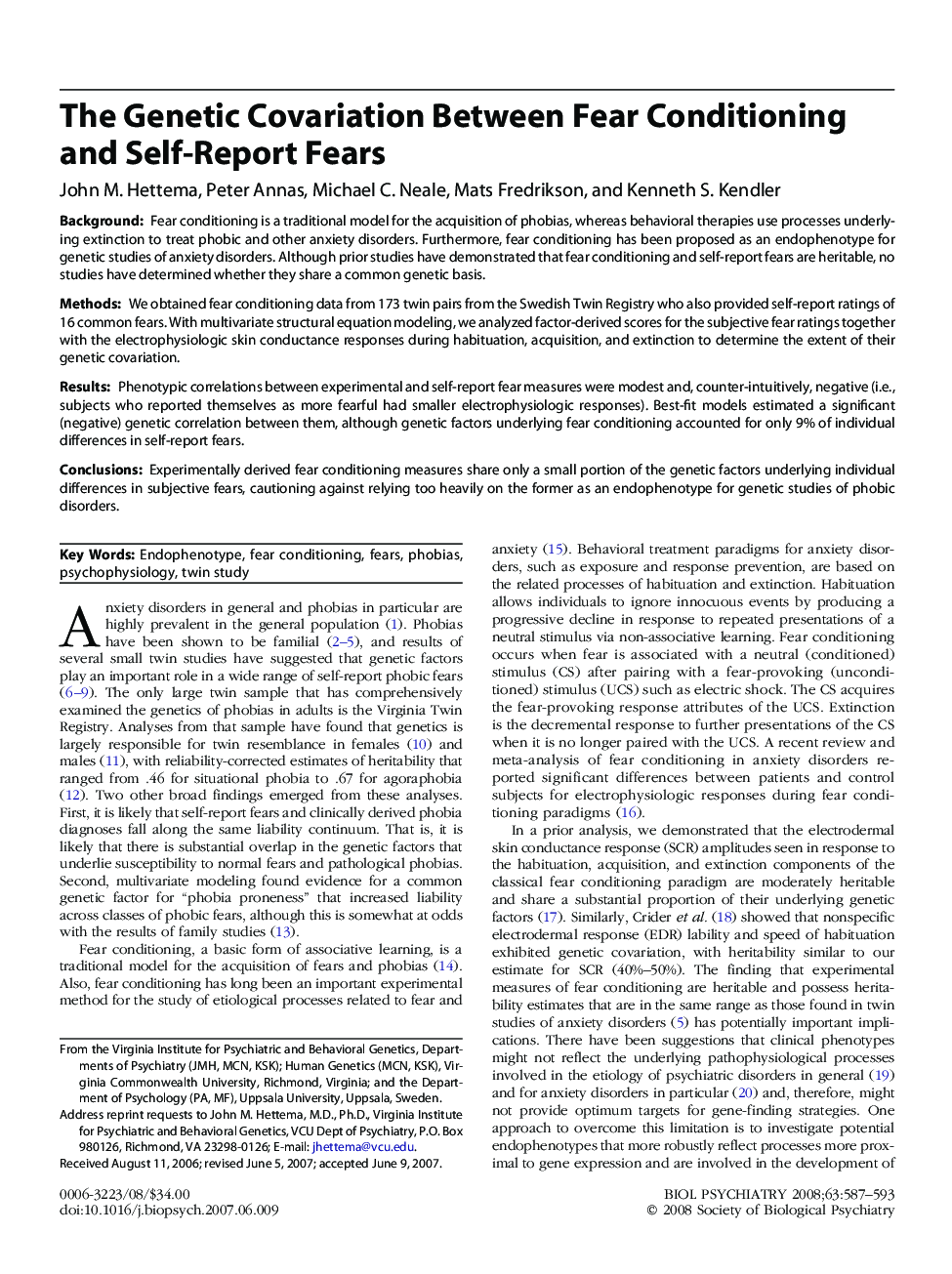| Article ID | Journal | Published Year | Pages | File Type |
|---|---|---|---|---|
| 4179333 | Biological Psychiatry | 2008 | 7 Pages |
BackgroundFear conditioning is a traditional model for the acquisition of phobias, whereas behavioral therapies use processes underlying extinction to treat phobic and other anxiety disorders. Furthermore, fear conditioning has been proposed as an endophenotype for genetic studies of anxiety disorders. Although prior studies have demonstrated that fear conditioning and self-report fears are heritable, no studies have determined whether they share a common genetic basis.MethodsWe obtained fear conditioning data from 173 twin pairs from the Swedish Twin Registry who also provided self-report ratings of 16 common fears. With multivariate structural equation modeling, we analyzed factor-derived scores for the subjective fear ratings together with the electrophysiologic skin conductance responses during habituation, acquisition, and extinction to determine the extent of their genetic covariation.ResultsPhenotypic correlations between experimental and self-report fear measures were modest and, counter-intuitively, negative (i.e., subjects who reported themselves as more fearful had smaller electrophysiologic responses). Best-fit models estimated a significant (negative) genetic correlation between them, although genetic factors underlying fear conditioning accounted for only 9% of individual differences in self-report fears.ConclusionsExperimentally derived fear conditioning measures share only a small portion of the genetic factors underlying individual differences in subjective fears, cautioning against relying too heavily on the former as an endophenotype for genetic studies of phobic disorders.
